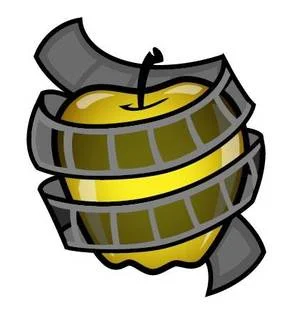DOCUMENTARY SHORT FILM REVIEW: Donald in Mathmagic Land
DONALD IN MATHMAGIC LAND-- 3 STARS
Over in my Facebook peer circle of loyal followers (the group is always open) for the Feelin’ Film podcast website where I contribute as a columnist, a Hump Day question was posed of what are favorite movies that make us appreciate math. Group member Paul Powers (proper shout out!) dropped the title Donald in Mathmagic Land. A few of us thought it had to be a fake or a clever Trumpian joke. Lo and behold, it’s a real Disney short film starring Donald Duck from 1959.
Touted on its Wikipedia page as a “widely-viewed educational film in American schools of the 1960s,” this school teacher (and fellow Donald) couldn’t resist throwing some words together to live up his website’s title. Challenge accepted. Face it folks, I can review and find life lessons in anything. As Darth Vader said in his first attempt to drop Luke Skywalker in the carbonite in The Empire Strikes Back followed by the classic Captain America line in honor of Avengers: Infinity War week, “all too easy” and “I could do this all day.”
This 27-minute featurette was narrated by Paul Frees, the golden voice known for his Rankin/Bass contributions and playing Boris from Rocky and Bullwinkle. He does most of the educational exposition while Donald the Duck, initially bearing a shotgun (a far different time to the classrooms of today) and voiced by his 50-year mainstay legend Clarence Nash, follows along. From natural wonders to kaleidoscopic journeys (and even a jarring gender swap) while name-dropping scientists and mathematicians, Donald reacts and waddles adorably through the drawn wonders.
Frees’s voiceover goal is to change Donald’s mind about math, to ruffle his feathers of antiquated ideas, false concepts, superstitions, confusion, and general bungling (all revealed in pseudo-analog-Inside Out fashion). Whether the knowledge of these “boundless treasures of science” stick in his bird brain remains to be seen. Spirited and pristinely stylish animation, dancing shapes, and moveable manipulatives fill the screen backed by music from Buddy Baker, a veteran of 26 Disney films of the era.
Laugh all you want, but the more I researched, the more legitimacy came into view. This short subject piece was attached to Darby O’Gill and the Little People, a Irish-themed favorite of this website starring a dashing young Sean Connery. Believe it or not, Donald in Mathmagic Land is an actual Oscar nominee from 1959, contending for the Academy Award for Best Documentary Short Subject. The awarded purpose was simple and Walt Disney himself said it best: "The cartoon is a good medium to stimulate interest. We have recently explained mathematics in a film and in that way excited public interest in this very important subject."
As dated as it may be, Donald in Mathmagic Land is efficient and effective for education through charm. Needless to say, it won my vote in the poll. Sorry, Good Will Hunting. My day would be complete if I could hear Clarence Nash's voice drop a little "how 'bout them apples!"
LESSON #1: MATH IS NOT FOR EGGHEADS-- Open your mind beyond nerd labels and stereotypes. Anyone can understand and embrace math. Absorb and use the proper vocabulary. Just think straight, which requires confidence, skill, and acceptance.
LESSON #2: MATH IS EVERYWHERE-- As our protagonist waterfowl exasperates, you find math in the “darndest of places” and in more than numbers and equations. He ain’t wrong and the documentary short covers a choice array of those occurrences. Art, music, nature, games, all carry the same laws and rules of math, no matter their setting. with the same rules and measures no matter the setting. More than numbers and equations too.
LESSON #3: TEACHING OR UNDERSTANDING MATH IS ALL ABOUT THE RIGHT EXAMPLES-- Take it from this teacher turning back the curtain on how to approach mathematical concepts to the learners in your charge. It’s all about the concrete-representational-abstract instructional approach. Those real-life connections from Lesson #2, turn into teachable moments. Once that attention is grabbed, you work further drawn-out and hands-on examples and challenges. If a cartoon can achieve that, so can you with the right examples and approach.
LOGO DESIGNED BY MEENTS ILLUSTRATED (#684)



